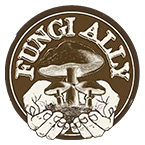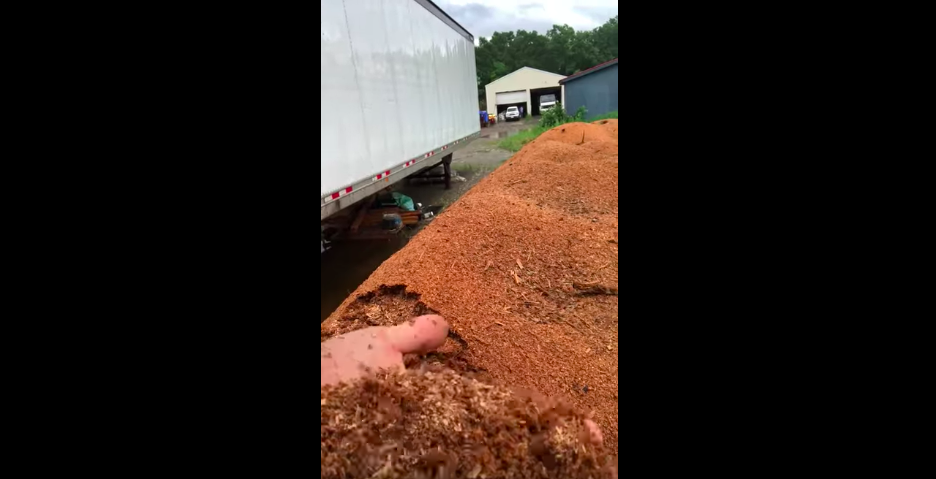‘Substrate’ is a fancy word for food; So you may have already figured out that mushroom substrate is food for the mushroom. Of course, there’s more to know…
Do you know what mushroom substrate is? Substrate is the material that mycelium consumes. We are putting the mycelium into the substrate, or into the mushroom’s food source, when we inoculate with whatever mushroom we want to grow. Our substrate is the food that the mycelium is going to consume and the mushrooms will fruit out of.
Mycelium becomes entwined with the substrate. It’s similar to making tea; You have your tea bag and water for making tea. When you combine the two, the tea and the water become one. It’s similar with mushrooms. When you inoculate by putting the mycelium in the substrate, the mycelium grows all throughout the substrate and cannot be separated. The two become one. The fungus cannot be separated from the substrate itself.
However, fruiting does take place. Mushrooms grow from the substrate and can be harvested from it.
Common mushroom substrate examples to know and grow with
A common mushroom substrate many beginning mushroom farmers use is grain. In the video below I show some examples of these substrates, including grain.
We’ve been using oats, and we add gypsum for micronutrients and calcium for the mycelium to grow effectively. These are the two substrates we mainly use when we are not trying to fruit mushrooms. When we are growing out mycelium and want fast growth.
The base mushroom substrate we use when fruiting mushrooms is sawdust. We get 15-30 yards at a time. It is all hardwood sawdust and the pile shown in the video is primarily oak. We get it all from a local mill.
The particles are relatively small and easily consumed by the mushroom mycelium.
Two commonly-added ingredients to sawdust as a mushroom substrate for fruiting
The first is wheat bran, which we add when growing shiitakes. It’s important to note that regarding mushrooms and gluten, all the gluten that is in wheat is broken down by the mycelium and that protein is no longer there.
The other is soybean hull, which is great for oysters, lion’s mane, and other species.
Preparing the mushroom substrate
We user a Pack one yard mixer. It’s a ribbon mixer, so when you pick up the hood and look inside, you can see the ribbon. When the mixer is on the ribbon moves around the substrate while also adding water. For about three years we hand-mixed the mushroom substrate ourselves — several thousands of pounds each week. Having this machine now allows for a much easier mixing process.
Button mushrooms and compost
Lastly, we’ll quickly mention button mushrooms. We do not grow these mushrooms because we mainly focus on choice edibles, but people who are growing button mushrooms often do it with compost as the mushroom substrate. The agaricus is primarily grown on compost with manure.
Another popular mushroom substrate is straw, especially for oyster mushrooms
Straw as a mushroom substrate must be prepared accordingly in order to grow oyster mushrooms from it.
To begin, chop the straw. Chopping the straw breaks the cells’ walls, making it easier for the oyster mushroom mycelium to colonize the straw and access its nutrients.
Chopping also helps the straw to become more compact. Once the straw is chopped it should be firmly packed into a plastic bag. The air pockets in the bag should be minimized as much as possible. Doing so will allow for an increase in yields.
The straw should also be treated before the mycelium comes in contact with this substrate. There are a few variations for treating straw that we have used. These include hot water pasteurization, a hydrated lime soak, cold fermentation, and wood ash soak.
Pasteurization is the standard used for treating substrate. Here is how the process can be done: Using a 55 gallon drum raised up on cinder blocks and a turkey burner below, about 30 gallons of water is brought up to 180 degrees Fahrenheit. Two burlap sacks of straw are then submerged in the barrel and the heat is turned off. A top is placed on top of the barrel and the water is maintained above 145 degrees Fahrenheit for two hours. We did not need to turn the heat on after submerging the straw in 180 degree Fahrenheit water. In pasteurization, the temperature is raised to kill all of the mesophilic organisms but not reach temperatures to activate the thermophilic organisms. By killing the mesophilic organisms, the mushroom mycelium has a clean substrate to grow onto.
With the lime soak and wood ash treatment the pH spikes and bursts the cell walls of the microorganisms. Once the straw is drained the pH lowers back to 7 a suitable place for mycelial growth.
There you have some quick information on mushroom substrates!
Want to start growing your own mushrooms at home? Check out our variety of mushroom spawn and grow kits!

